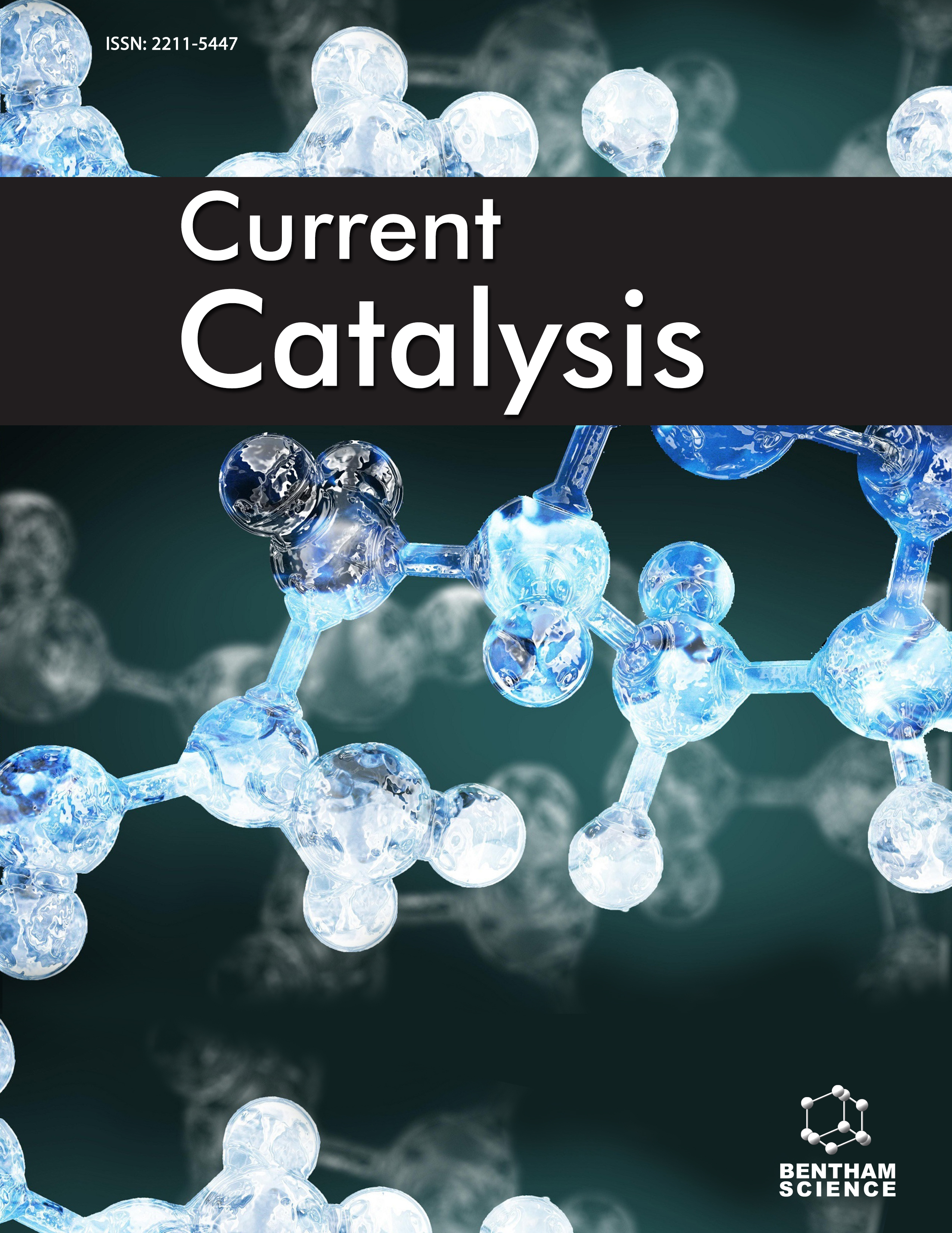- Home
- A-Z Publications
- Current Catalysis
- Previous Issues
- Volume 6, Issue 3, 2017
Current Catalysis - Volume 6, Issue 3, 2017
Volume 6, Issue 3, 2017
-
-
Zeolite-catalyzed Transformation of Glucose: A Review
More LessAuthors: Gang Yang and Xianli ZouBackground: Isomerization of glucose to fructose is recognized as one of the key reactions for the transformation of cellulosic biomass, a potent substitution for the depleting petroleum resources. Zeolites are among the most useful catalysts for the isomerization process and substantial achievements have been achieved thus far. A state-of-the-art review is given within this content, and catalytic mechanisms and competi Read More
-
-
-
Recent Advances in Cycloaddition Reactions of Azlactones for Heterocycle Synthesis
More LessAuthors: Xiao-Ye Yu, Fan Zhou, Wen-Jing Xiao and Jia-Rong ChenBackground: Azlactones, also known as oxazolones, are a class of versatile intermediates and are commonly used for the synthesis of various heterocyclic scaffolds and unnatural α-amino acids. In particular, because of their inherent multiple sites of reactivity, azlactones have recently attracted a great deal of research efforts from the synthetic community. By exploring different sites of reactivity, a variety of cycloadditi Read More
-
-
-
High Yield Immobilization and Stabilization of Oxidoreductases Using Magnetic Nanosupports and Their Potential Applications: An Update
More LessBackground: The enzymes, oxidoreductases catalyze various vital biological oxidation/ reduction reactions at the cellular level and thus a wide spectrum research in the area of enzyme technology has focused on their applications in different disciplines such as bioanalysis, biodegradation, biosynthesis, biotechnology, therapeutics and industry etc. Methods: Oxidoreductases have successfully immobilized on the surface of si Read More
-
-
-
A Water-soluble Cobalt(II) Compound Co(TCNQ)2, An Electrocatalyst for Hydrogen Evolution from Acetic Acid and Water
More LessAuthors: Ling-Zhi Tang and Shu-Zhong ZhanBackground: The generation of hydrogen by electrochemical reduction of water, represents an attractive approach for storing the electrical energy transiently produced by renewable energy sources, and catalysts based on transition metal compounds are used to increase the reaction rate. Despite much progress in water reduction catalysis, structural complexity, insolubility in aqueous media and low pH conditions severely li Read More
-
-
-
Catalytic Self-condensation of 5-Hydroxymethylfurfural over Modified Heteropolyacid
More LessAuthors: Anil B. Gawade and Ganapati D. YadavBackground: 5-Hydroxymethylfurfural (HMF) and its derivatives are versatile materials having tremendous applications in a variety of industries. One of the interesting derivatives of HMF, 5, 5' (oxy-bis (methylene)) bis-2-furfural (OBMF), has potential uses in polymer and pharmaceuticals. The synthesis of OBMF is mainly reported by using homogeneous catalyst and only a few reports are published by using heterogeneous catal Read More
-
-
-
Synergy of Deep Eutectics and Magnetite in NanoFe3O4@Choline Chloride: 2Urea as a New Reusable Catalyst for Synthesis of Pyrazoles
More LessAuthors: Fatemeh Tamaddon and Davood AzadiBackground: Supporting of choline chloride (CC):2urea as a deep eutectic solvent (DES) on nonomagnetite gives the core-shell of nanoFe3O4@CC:2urea which in DES coating inhibits the agglomeration of nanoFe3O4 and nanoFe3O4 facilitates reusability of DES. The ratio of nanoFe3O4 to DES in nanoFe3O4@CC:2urea was determined as 8:1. These synergic effects led to a high catalytic performance for nano Read More
-
-
-
Theoretical Elucidation of Glucose Dehydration to 5-Hydroxymethyfurfural Catalyzed by Sn-KIT-6 in Aqueous Medium Using DFT
More LessAuthors: Lu Li, Xiuzhen Hu, Chongwen Jiang and Hong ZhongBackground: A variety of catalysts have been developed for HMF production from glucose. However, there is less information available concerning the mechanism of HMF dehydration from glucose arisen from heterogeneous catalyst in aqueous medium. It is of great significance to figure out the mechanism of HMF formation from glucose catalyzed by molecular sieve. Methods: A combined experimental and theoretical resear Read More
-
-
-
Evaluation of Residue Hydrotreating Catalysts Supported on Mesoporous Aluminas
More LessAuthors: Kirtika Kohli, Samir K. Maity, Ravindra Prajapati, Madhusudan Sau and Madhukar O. GargBackground: Residue hydroprocessing is the most important processes in the refinery to obtain transportation fuels from the low quality petroleum resources. But the upgradation of residues is a difficult task, due to the presence of high contaminants such as sulfur, metals (Ni and V), asphaltenes and residue carbon, which cause rapid deactivation of the catalysts. The most effective approach to control catalyst deactiv Read More
-
Most Read This Month
Article
content/journals/ccat
Journal
10
5
false
en


